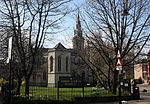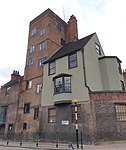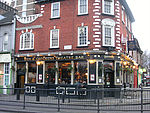City of London Academy Highbury Grove
1967 establishments in EnglandAcademies in the London Borough of IslingtonEducational institutions established in 1967Secondary schools in the London Borough of Islington

City of London Academy Highbury Grove (formerly Highbury Grove School) is an 11–18 mixed secondary school with academy status in the London Borough of Islington, England. It is part of the City of London Academies Trust.
Excerpt from the Wikipedia article City of London Academy Highbury Grove (License: CC BY-SA 3.0, Authors, Images).City of London Academy Highbury Grove
Highbury New Park, London Highbury (London Borough of Islington)
Geographical coordinates (GPS) Address Nearby Places Show on map
Geographical coordinates (GPS)
| Latitude | Longitude |
|---|---|
| N 51.5495 ° | E -0.0974 ° |
Address
Samuel Rhodes School
Highbury New Park 11
N5 2EG London, Highbury (London Borough of Islington)
England, United Kingdom
Open on Google Maps








